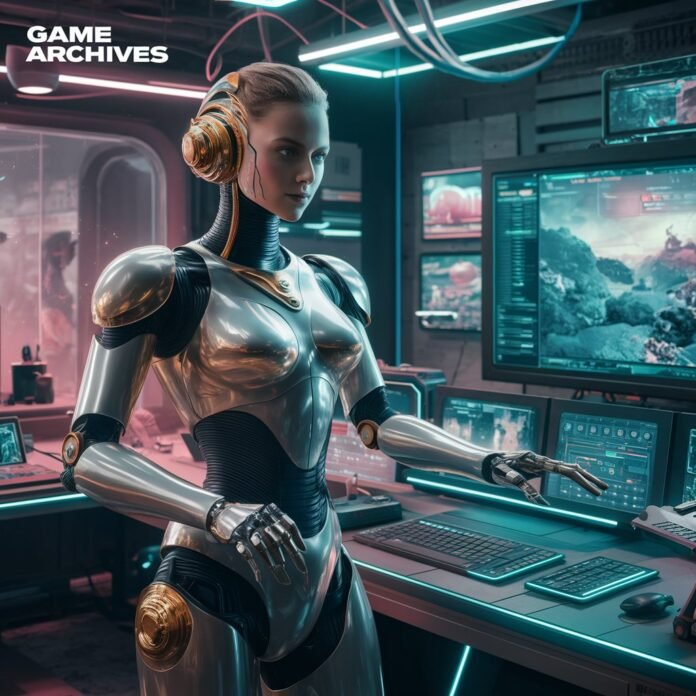At TheGameArchives.com, we believe understanding the technical foundations of game preservation is just as important as the games themselves TechView is our dedicated platform for exploring the hardware, software, and innovative solutions that make digital archiving possible. From breakthroughs in emulation accuracy to cutting-edge restoration techniques, this series dives deep into the tools and technologies safeguarding gaming history. Whether you’re a developer, historian, or simply tech-curious, join us as we examine how modern engineering meets retro gaming – ensuring classic titles remain playable for generations to come.
1. Emulation Evolution: From Hobby Projects to Preservation Standards
The world of game emulation has undergone a remarkable transformation from its early days as niche programming experiments to becoming essential preservation tools. Modern emulators like higan and MAME now achieve near-perfect cycle accuracy, replicating not just game behavior but the actual electrical timing of original hardware. We examine how projects like FPGA-based solutions are bridging the gap between software emulation and hardware replication, offering pixel-perfect recreations of classic systems. The article explores the technical challenges of synchronizing multiple processor cores to mimic vintage console architectures, and why certain games (particularly those using obscure chips or custom processors) still defy perfect emulation after decades of effort.
2. Digital Archaeology: Recovering Lost Source Code and Assets
Game preservation often resembles an archaeological dig, with archivists employing specialized tools to extract data from deteriorating media. We detail how tools like the KryoFlux adapter can read floppy disks at the magnetic flux level, recovering data even from damaged disks that standard drives can’t read. The section covers forensic techniques for reconstructing lost source code from final binaries, including disassembly tools and the painstaking process of symbol recovery. A case study highlights how these methods recently uncovered an unreleased Sega Saturn prototype, with our team piecing together incomplete assets to create a playable build from scattered development materials.
3. The Future of Storage: Preserving Games for the Next Century
As physical media degrades and digital distribution platforms sunset games without warning, archivists face the monumental task of ensuring long-term accessibility. This segment analyzes emerging storage solutions like M-DISC’s archival-grade DVDs (rated for 1,000+ years) and how blockchain technology is being adapted for version control in game preservation. We contrast traditional RAID arrays with modern distributed storage systems like IPFS, examining their respective advantages for ensuring data redundancy. The article also investigates the unique challenges of preserving online-only games, from server emulation to recreating matchmaking systems that originally depended on now-defunct infrastructure.
4. Restoration Techniques: Bringing Old Games Back to Life
Modern restoration goes far beyond simple upscaling – it’s a multidisciplinary effort combining programming, art, and audio engineering. We break down the AI-assisted texture reconstruction process used to enhance early 3D games without losing their original aesthetic. The section includes an in-depth look at machine learning applications for noise reduction in FMV sequences and audio restoration from low-quality source material. A spotlight on our “Code Resurrection” initiative explains how we’re collaborating with original developers to port abandoned codebases to modern systems while maintaining gameplay authenticity, complete with technical diagrams of the wrapper systems making this possible.
5. Legal Technology: DRM, Authentication and Preservation Ethics
The intersection of copyright law and preservation technology creates complex challenges that our legal engineering team navigates daily. This technical overview explains the reverse-engineering methods used to document (without circumventing) various DRM schemes for historical record. We examine the development of “legal emulation” frameworks that authenticate original media while enabling play on modern devices, including detailed flowcharts of the verification processes. The article also covers our work on developing open documentation standards for game preservation that satisfy both archival needs and rights-holder concerns, featuring excerpts from our technical whitepapers on checksum verification and metadata tagging systems.
6. Community Tech: How Enthusiasts Are Advancing Preservation
The most exciting preservation breakthroughs often come from the enthusiast community. This section highlights remarkable fan-developed tools like the universal save file converter that bridges decades of memory card formats, and the crowdsourced project creating 3D scans of every known controller variant. We profile the homebrew developers creating modern development kits for retro platforms, enabling new preservation-friendly ways to experience classic hardware. The article concludes with a call to action for technically-skilled readers, detailing how they can contribute to open-source preservation projects through our developer portal, complete with API documentation and sample code for common preservation tasks.
Conclusion: Technology as the Guardian of Gaming Heritage
TheGameArchives.com TechView demonstrates how technical innovation serves as the backbone of game preservation. From the bits and bytes of storage solutions to the complex algorithms powering accurate emulation, each technological advancement represents another safeguard against the loss of interactive history. As we continue to push the boundaries of what’s possible in digital preservation, we invite engineers, programmers, and technically-minded enthusiasts to join our efforts. The future of gaming’s past is being written today – in code, in hardware, and in the shared knowledge of a community determined to keep these digital artifacts alive. Visit our TechLab forum to participate in ongoing discussions or contribute to our open-source preservation tools.



